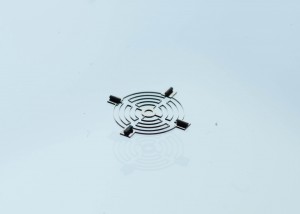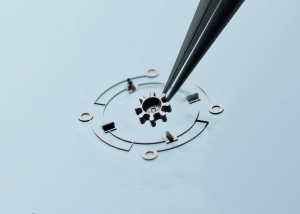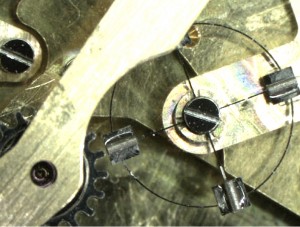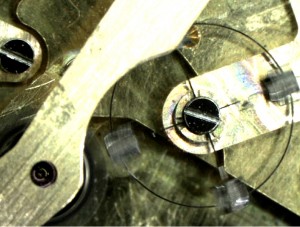Horlogical Résonique is not only a theory. The principle has been demonstrated with several prototypes. Different kinds of resonators were developed with variation on geometry, frequency and mode shape. Those prototypes were made for lab testing purpose with in-depth performances study. All of them are proposing a silent and accurate regulation and can easily be integrated in a wristwatch.
 |
 |
| Two resonators. A rotational mode at 360 Hz on the left picture, an elliptic mode at 890 Hz on the right. |
|
On December 8th 2011, during the first public presentation, De Bethune demonstrated a 926 Hz, 6’667’200 vph prototype. The 22 teeth rotor turns at a rate of 2525.5 RPM. Each tooth operates as a magnetic pole released with each resonator’s oscillation. Such a rotational speed is not that high compared to some other mechanical applications. Obvious limitations in term of frequency increases will come from the number of magnetic poles that can be fitted on the rotor, as well as rotational speed limits before it induces mechanical wear.
 |
 |
| 926 Hz prototype. Left picture is showing both magnetic rotor and resonator in static state. On the right, both elements synchronized, in running condition. | |
926 oscillations per second is actually among the highest frequency for a regulating organ powered with pure mechanical energy. However, the goal is not to beat frequency records but experiment and test a technology to its physical limits. Résonique open a new field of unmatched frequencies. It might probably allow, later on, meeting the accuracy level of quartz movements in wearing conditions. Two developments axis are to be considered: testing higher frequencies on one hand and achieve Résonique wristwatches with lower frequencies on the other, frequencies greater than 100 Hz but with more than 24 hours autonomy.



